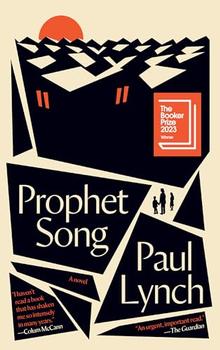Summary | Excerpt | Reviews | Readalikes | Genres & Themes | Author Bio

SUVs--The World's Most Dangerous Vehicles and How They Got That Way
by Keith Bradsher
For all their deadliness to other motorists, SUVs are no safer than cars for their own occupants. Indeed, they are less safe. The occupant death rate per million SUVs is actually 6 percent higher than the occupant death rate per million cars. The biggest SUVs, which pose the greatest hazards to other motorists, have an 8 percent higher death rate for their occupants than minivans and the larger midsize cars like the Ford Taurus and Pontiac Grand Prix.{BN1} How is this possible? SUV occupants simply die differently, being much more likely than car occupants to die in rollovers, as well as being much more likely to send other drivers to the grave.
SUV occupants also face a higher risk of paralysis. While no national studies have been done, statewide studies in Arkansas and Utah have found that rollovers account for nearly half of all cases of paralysis. Put another way, rollovers cause almost as many paralyzing spinal injuries as all illnesses, falls and every other form of traffic accident combined-even though rollovers make up less than 1 percent of all crashes.
Worst of all, we have only seen the beginnings of the SUV problem, which is certain to become much bigger and much deadlier in the years to come. The safety hazards of SUVs have been mitigated until now because they have mainly attracted the safest drivers in America. The principal buyers of SUVs in the 1990s and early 2000s have been baby boomers in their 40s, with some sales to people in their 30s and 50s. These affluent first owners of SUVs tend to be the most cautious drivers on the road, because they are mostly middle-aged people who have plenty of driving experience and still have acute vision, hearing and mental faculties. Half of them also have families, so they are much less likely to be out driving in the wee hours of the morning, when crash rates soar.
There are 20 million SUVs on the nation's roads and more than half of them are less than five years old. Three-quarters of the full-size SUVs, the largest models, are also under five years old. As affluent, cautious-driving baby boomers begin to sell their SUVs or turn them in at the end of leases, the used-vehicle market will be flooded with these vehicles. Falling prices will make them more attractive to younger drivers and drivers with poor safety records-including drunk drivers. The only thing more frightening for traffic safety experts than a drunk or young person behind the wheel of a new SUV is a drunk or young person behind the wheel of an old SUV with failing brakes and other maintenance problems.
SUVs are terrible not just for traffic safety but for the environment. Because of their poor gas mileage, they emit a lot of carbon dioxide, a gas linked to global warming. A midsize SUV puts out roughly 50 percent more carbon dioxide per mile than the typical car, while a full-size SUV may emit twice as much. The Sierra Club likes to point out that driving a full-size SUV for a year instead of a midsize car burns as much extra energy as leaving a refrigerator door open for six years. SUVs also spew up to 5.5 times as much smog-causing gases per mile as cars.
Automakers made surprising progress in the 1980s and 1990s in improving the fuel economy of cars, but these gains are being slowly erased by the rise of SUVs. Chrysler boasts that its full-size Concorde sedan now has better acceleration and exactly the same interior room as a 1978 Chrysler New Yorker luxury sedan, but gets nearly the same gas mileage as a 1978 Dodge Omni subcompact, 23 miles per gallon. Yet sales of the Concorde and other large cars have eroded, displaced by full-size SUVs like Chrysler's Dodge Durango-which get the same mileage as the 1978 New Yorker, about 14 miles to the gallon.
We have only seen the beginning of the SUV problem so far. Traditional SUVs, which use the same underbodies as pickup trucks, have climbed from 1.78 percent of new vehicles sold in 1982 to 6.7 percent in 1991 and 16.1 percent in 1997, and have since leveled off at about 17 percent. The change has been even swifter at the luxury end of the auto market, with SUVs rising from less than one-twentieth of the market in 1990 to half the luxury market by 1996. But SUVs still make up only 10 percent of the vehicles currently registered in the United States. Most of the automobiles built in the 1980s are still on the road, and these are mostly cars, so this has been holding down the percentage of all vehicles on the road that are SUVs.
Copyright Keith Bradsher 2002. All rights reserved. Reproduced by permission of the publisher, Public Affairs. No part of this book may be reproduced without written permission from the publisher.




If you want to build a ship, don't drum up people... but rather teach them to long for the endless immensity of the...
Click Here to find out who said this, as well as discovering other famous literary quotes!
Your guide toexceptional books
BookBrowse seeks out and recommends the best in contemporary fiction and nonfiction—books that not only engage and entertain but also deepen our understanding of ourselves and the world around us.